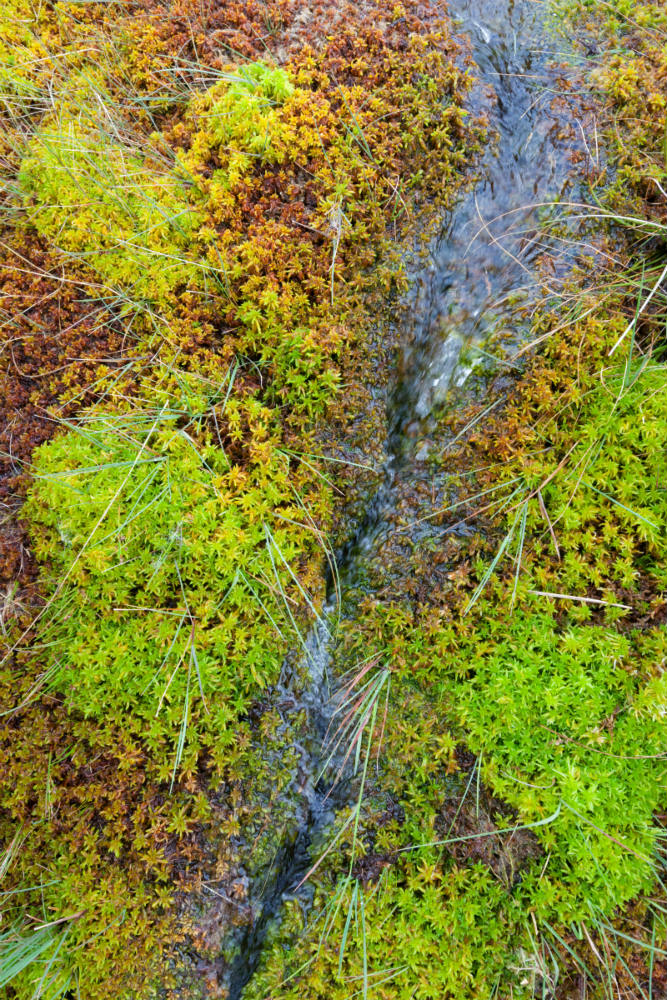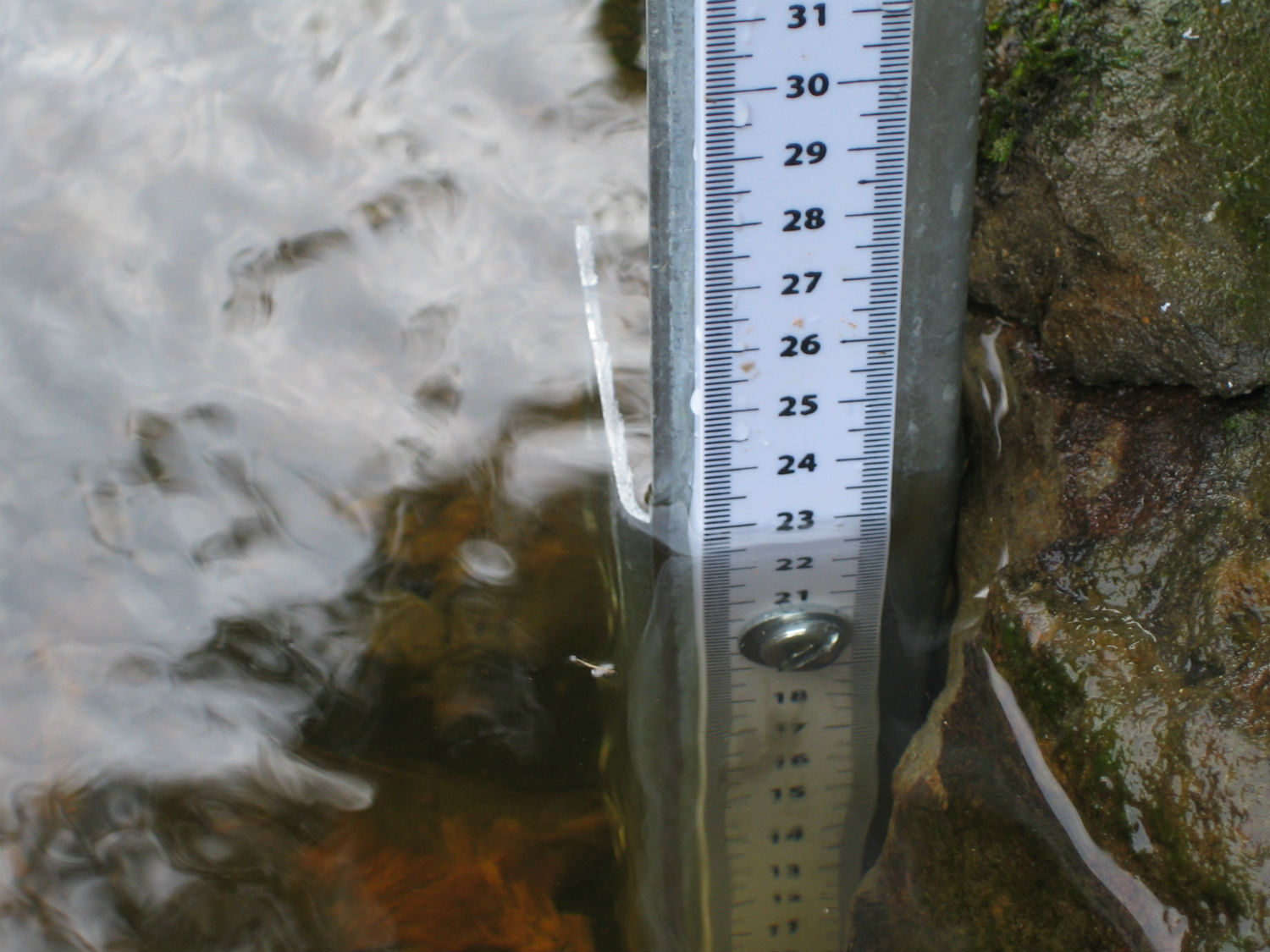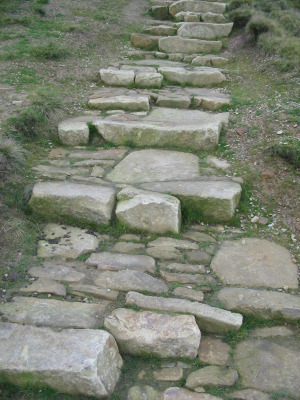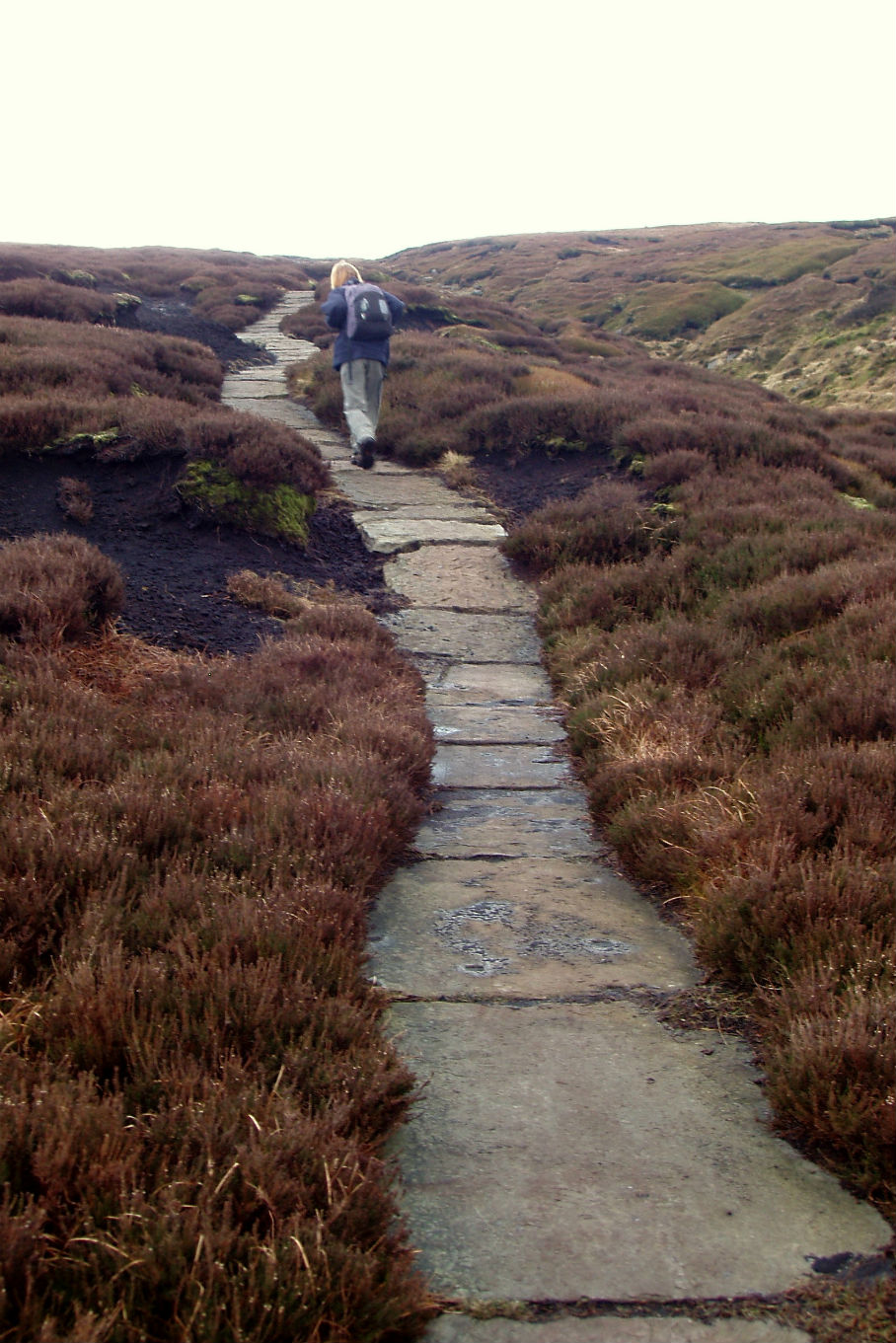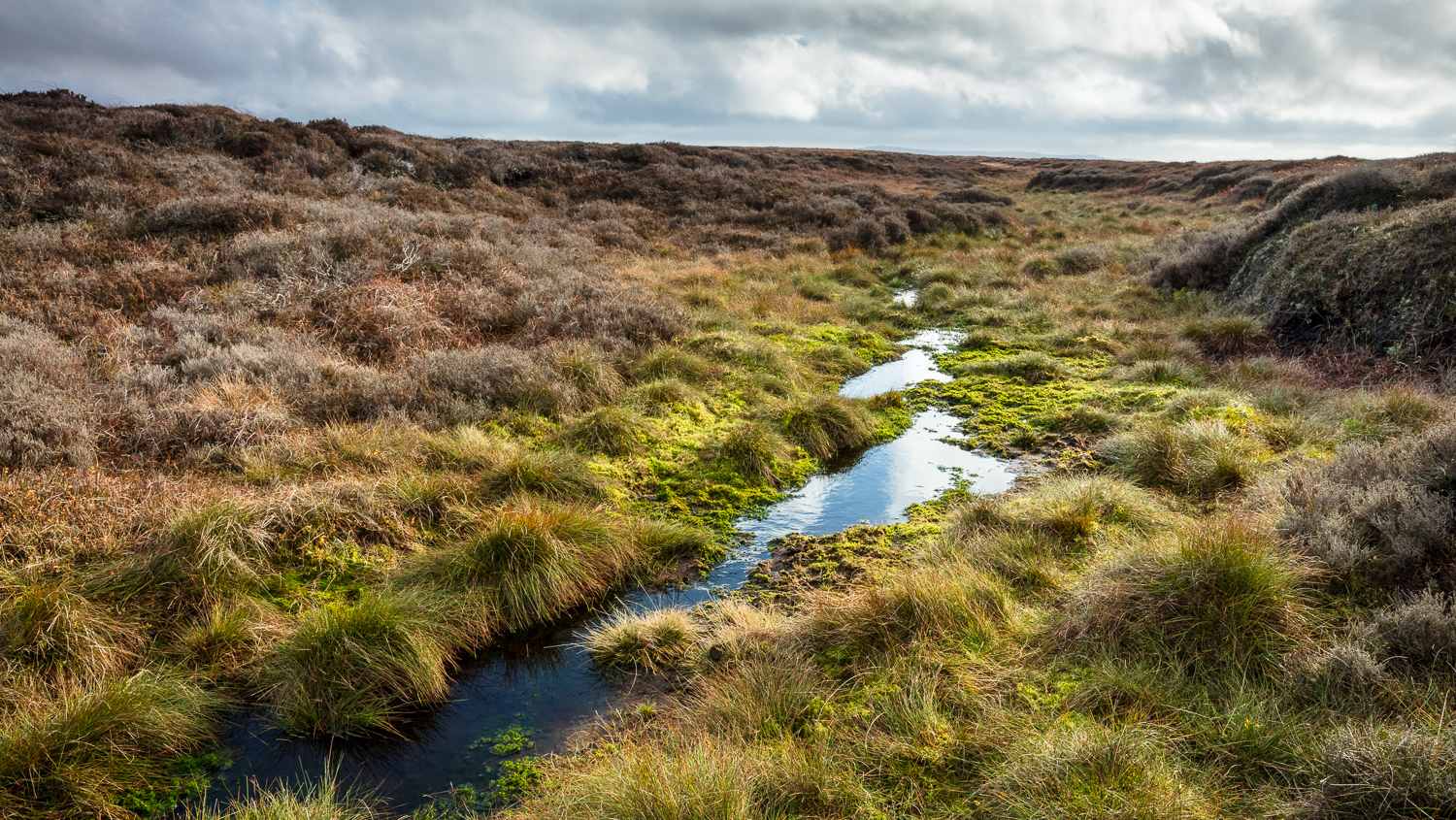
Rewetting - We are getting moorland blanket bog habitats back into wetter, boggier condition
Our conservation work aims to re-wet blanket bogs, benefitting water supply and biodiversity.
The problem
A blanket bog in good condition is really wet with the water table (permanently saturated ground) within 10cm of the surface. Past management has resulted in the drainage of much of the bog on the Peak District and South Pennine moors making them much drier. Our conservation work aims to reverse the drying out of the moors in order to rewet the bogs, benefiting water supply and biodiversity.
On much of our moorland, blanket bogs are in poor condition without much vegetation cover. This leaves the peat bare and susceptible to erosion. Over time, erosion gullies have formed some of which are now so deep that they reach the bedrock. They can be as much as 4 metres deep, draining the peat and drying it out.
On some moors, artificial ditches, known as ‘grips’ were cut for drainage, usually for agricultural or shooting reasons. Like gullies, these have acted to lower the water table so much of the remaining peat has become dry and easily damaged.
These grips and gullies channel water quickly off the moor increasing the flood risk downstream. The water takes the eroded peat with it, turning it brown and affecting the quality of the water that supplies our homes.
What we are doing to help
Blocking gullies and grips by installing dams reverses these effects by trapping water and sediment, slowing the flow of the water and storing more of it in the peat. This raises the water table providing the conditions necessary for bogs to develop again.
There are two main categories of dam:
- Permeable – using materials such as heather bale, timber or stone. These are designed to slow the water flow and trap sediment which will build up and become vegetated.
- Impermeable – using peat or plastic. These are designed to trap water, creating pools and raising the water table.
The type of dam we use depends on the location, what is available, what is practical and what we want to achieve. Find out more about grip and gully blocking with our helpful factsheet.
Gully blocking video
Why we block erosion gullies and the types of dam we use across the Moors for the Future Partnership's programme of works.
Produced by the MoorLIFE project.
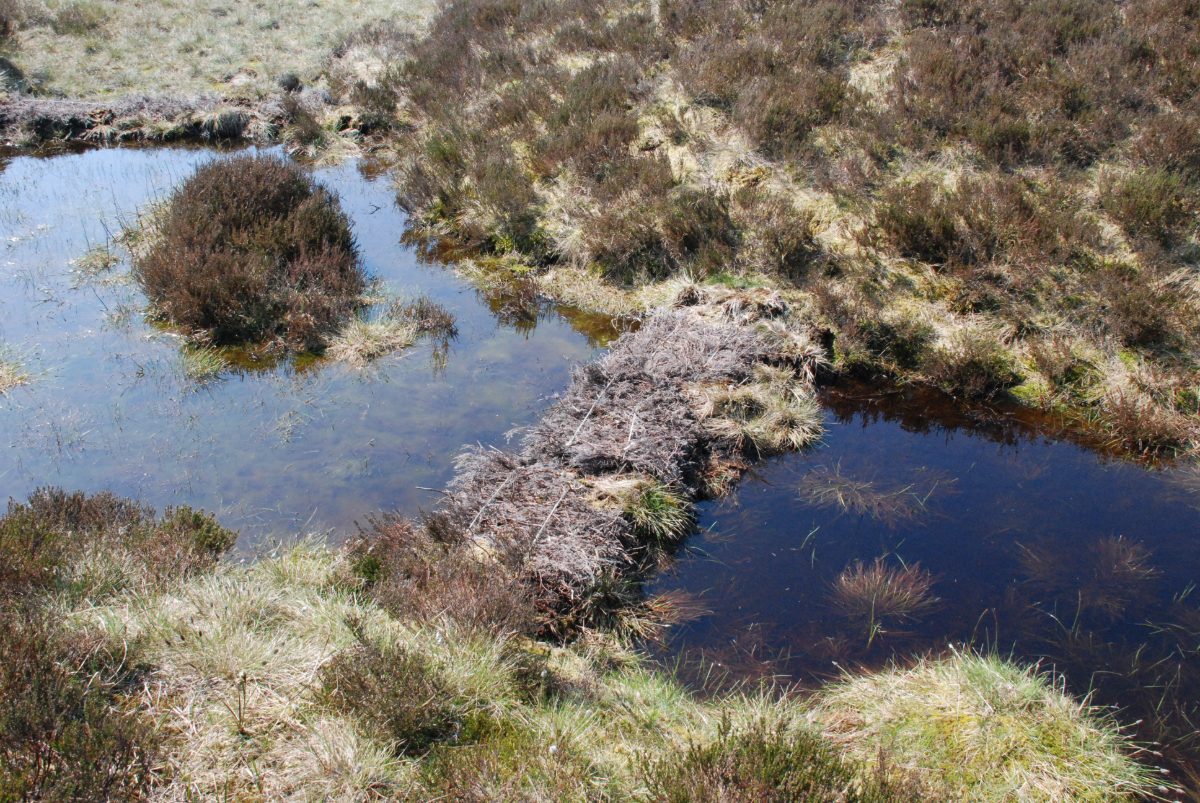
Heather bale dams
Heather bale dams are made of a natural material which will become vegetated and quickly blend into the landscape. They can be used in flat, bare areas known as peat pans (often caused by wildfire) and in small gullies which have a only slight slope. Once the dam is in place, locally sourced varieties of grasses are planted, and the roots hold the bales in place and tie them into the peat.
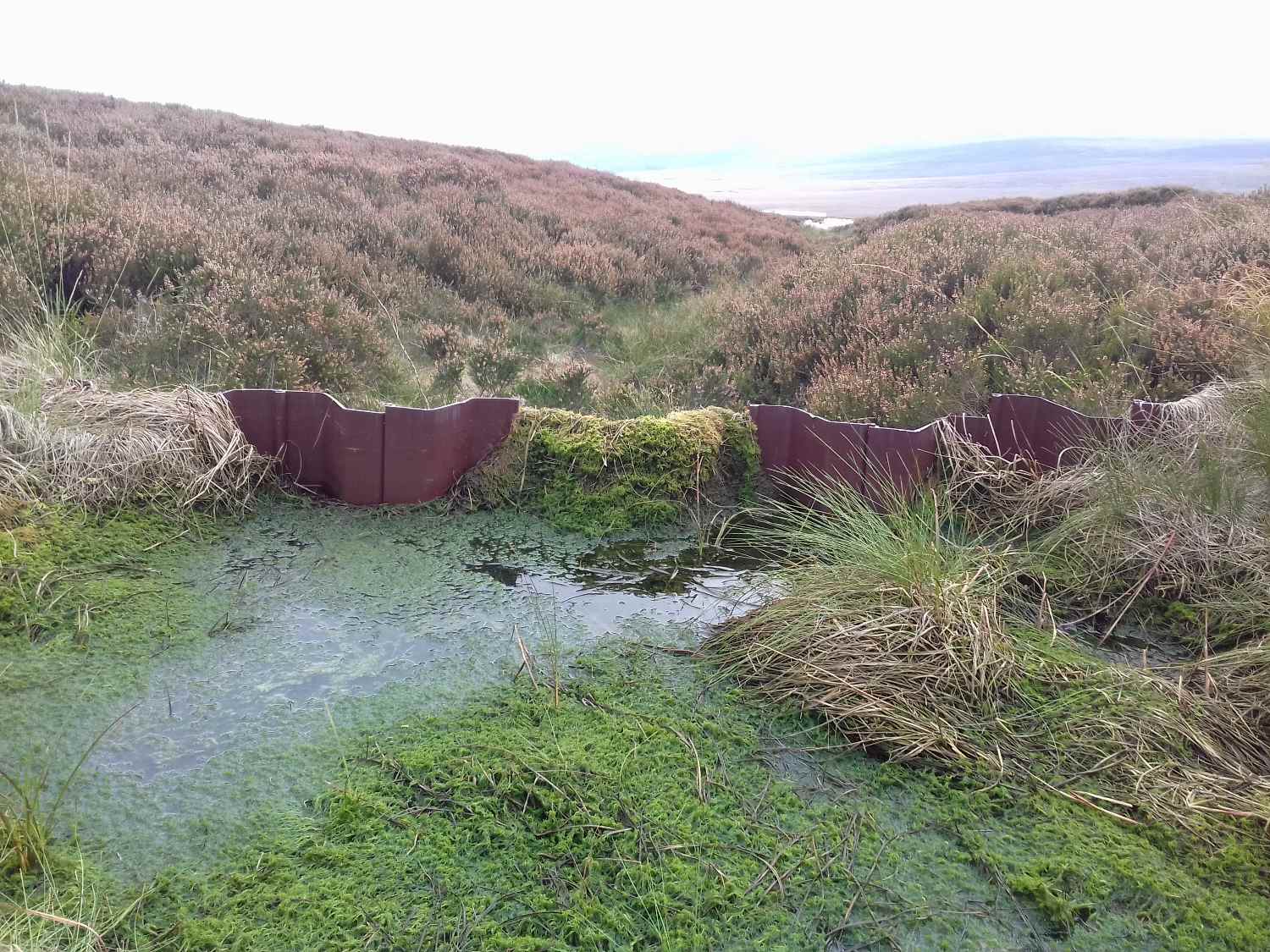
Plastic dams
Plastic dams are impermeable and made from sheets of plastic piling which lock together. They can hold considerable volumes of water, creating large, deep pools, but they can only be used where there is deep peat to fix the plastic sheets into.
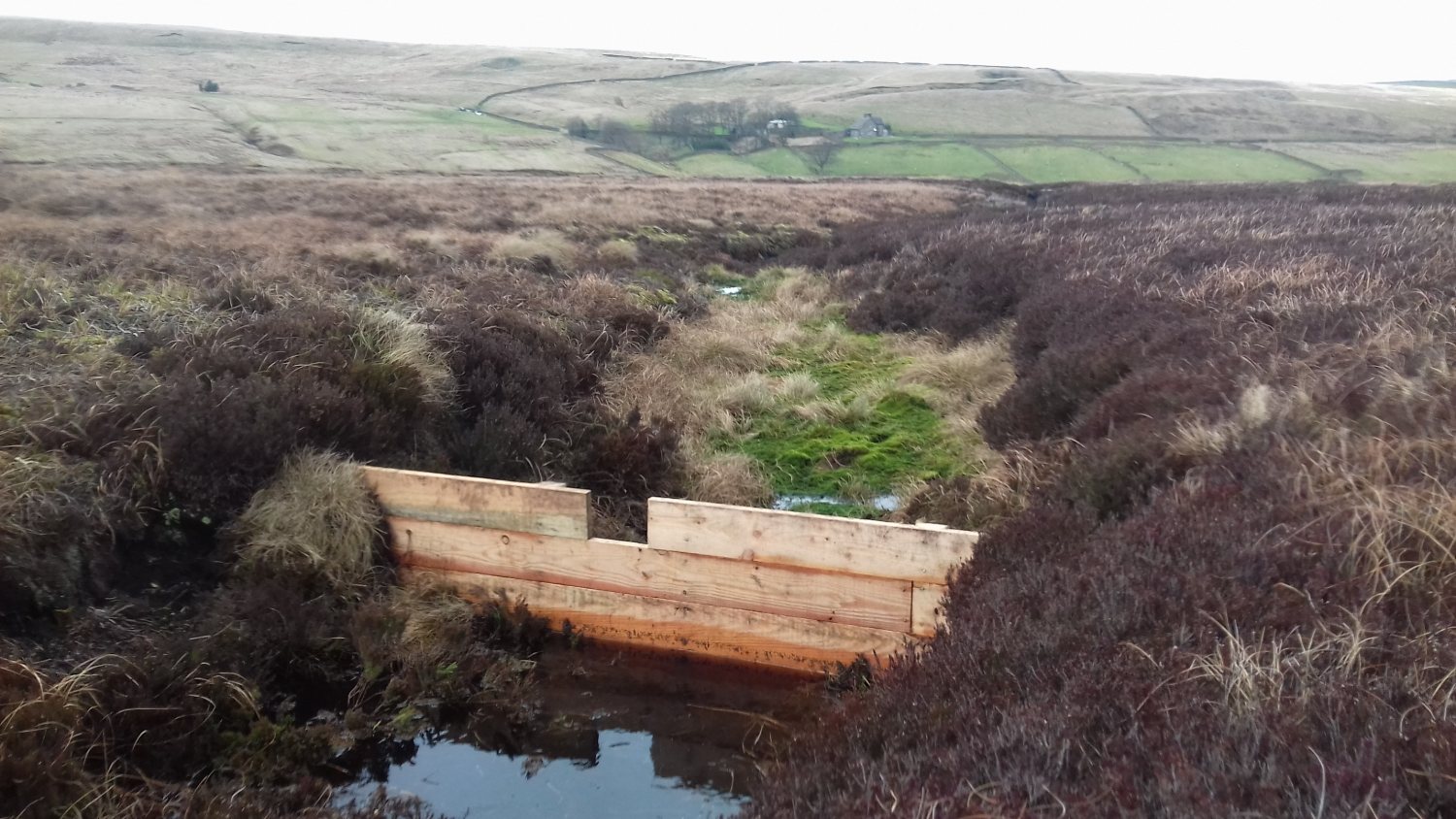
Timber dams
Timber dams are used in medium-sized gullies that are on medium to deep peat (not mineral soil). Wooden dams are strong and very effective at trapping sediment and holding water. Timber dams can be permeable or impermeable, depending upon what we need to achieve on a moor. By altering the spacing between the wooden boards and the height of the dam, we can allow more or less flow, depending upon what we are aiming for.
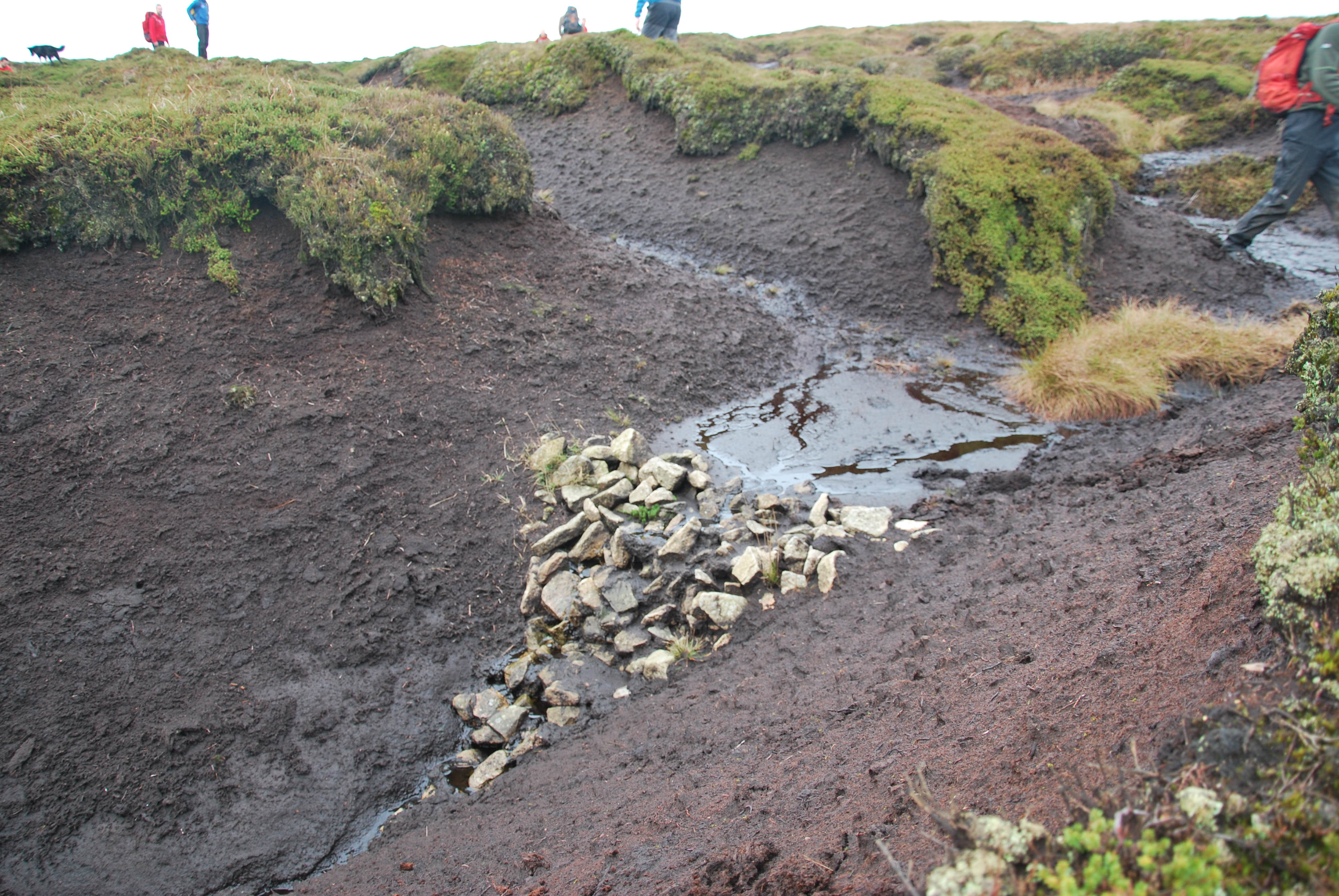
Stone dams
Stone dams are suitable for any location, on peat, mineral soil or on bedrock. Stone dams are very good at trapping sediment, they quickly naturalise, blending into the landscape and they are very robust, permanently slowing the flow and giving long lasting benefits.
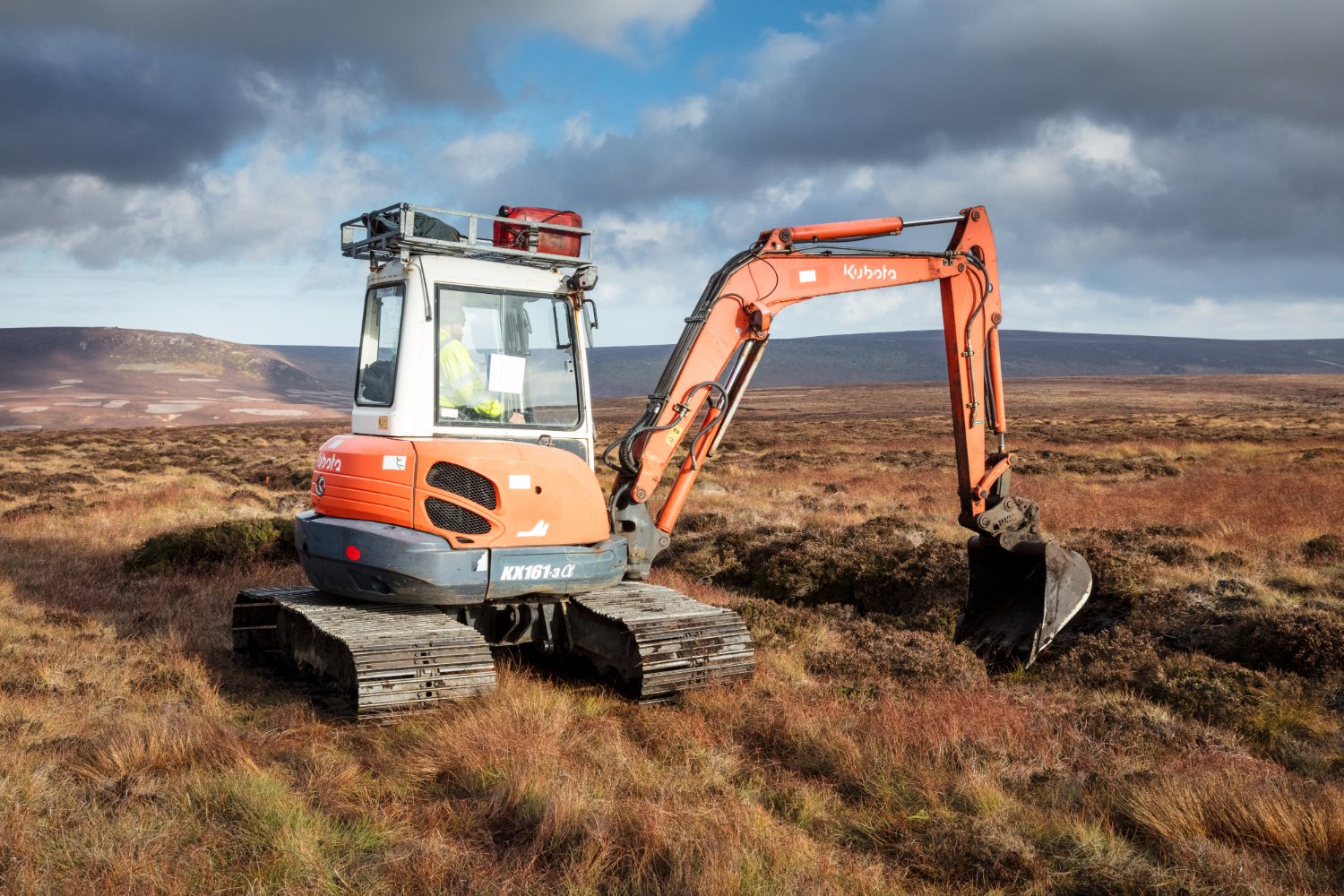
Peat dams
Peat Dams are constructed from peat itself, using diggers. They are excellent for raising the water table and for dispersing water overland, but they can only be used where peat is at least 50cm deep. They also quickly naturalise into the landscape and provide high ground which waders use to survey the area. Also they allow people and sheep to cross the wet gullies more safely and easily.
MoorLIFE 2020
Find out more about our conservation aims under the MoorLIFE 2020 project
